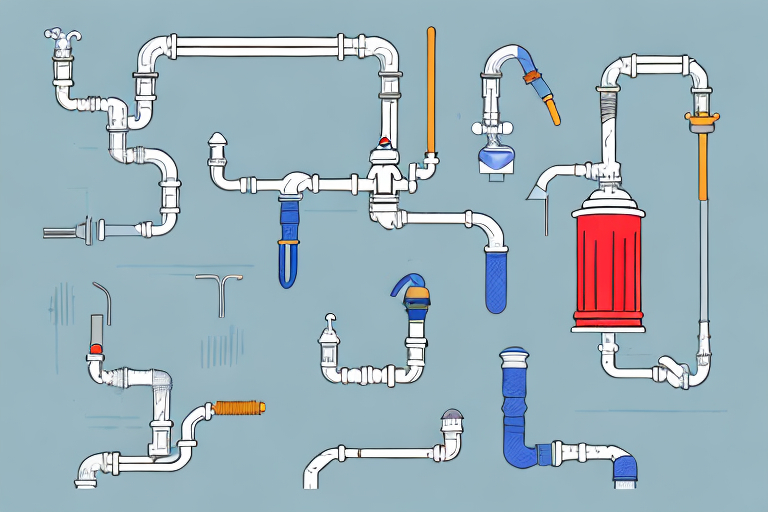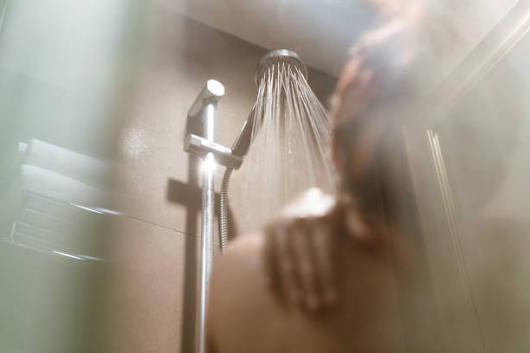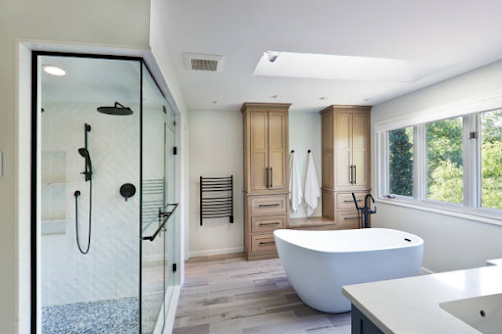How to Maintain Your Home's Plumbing System

Keeping your home's plumbing system in good condition is essential for a functional and comfortable living space. By understanding the key components of your plumbing system, practicing regular maintenance, and knowing when to seek professional help, you can ensure that your plumbing system operates smoothly for years to come. In this article, we will explore how to maintain your home's plumbing system and discuss the long-term benefits of doing so.
Understanding Your Home's Plumbing System
Before diving into maintenance tips, it's important to have a basic understanding of your home's plumbing system. Your plumbing system consists of several key components that work together to deliver water and remove waste.
Let's take a closer look at the main components of a plumbing system:
Water Supply Lines
The water supply lines are responsible for delivering clean water to your home. These lines connect to the municipal water source and bring water into your house. They are typically made of copper, PEX, or PVC pipes. The water supply lines branch out to various fixtures and appliances throughout your home, ensuring that water is readily available wherever it is needed.
Drainage Pipes
The drainage pipes, also known as waste pipes, are responsible for carrying away used water and waste from your home. These pipes are usually made of PVC or cast iron and are designed to transport wastewater to the sewer lines. Proper slope and venting are essential for the drainage system to function effectively and prevent clogs.
Fixtures
Fixtures are the points of use in your plumbing system, such as toilets, sinks, showers, and bathtubs. These fixtures are connected to the water supply lines and drainage pipes, allowing you to access clean water and dispose of waste. Each fixture has its own set of valves and traps to regulate water flow and prevent backflow. Dupont Plumbing is the best platform for plumbing solutions at an affordable rate.
Sewer Lines
The sewer lines are responsible for carrying wastewater from your home to the municipal sewer system or septic tank. These lines are usually made of PVC or cast iron and are buried underground. Proper maintenance and regular inspections are crucial to prevent blockages and ensure the proper functioning of the sewer system.
Now that we have a better understanding of the main components, let's take a closer look at how the plumbing system works.
Water Delivery
A plumbing system works on the principle of water pressure. Water is delivered to your home through the main water supply line, which connects to the municipal water source. The pressure in the water supply lines pushes the water through the pipes and into the fixtures. Valves, such as shut-off valves and pressure regulators, help control the flow and pressure of the water.
Waste Removal
After you use water in your fixtures, it flows through the drainage pipes and into the sewer lines. Gravity and proper slope allow the wastewater to flow away from your home and toward the sewer system or septic tank. Vent pipes help maintain proper air pressure in the drainage system, preventing traps from being siphoned and allowing wastewater to flow freely.
Understanding how these components interact is crucial for troubleshooting potential issues and conducting maintenance. By having a basic knowledge of your home's plumbing system, you can better identify and address any problems that may arise, ensuring the efficient and reliable operation of your plumbing system.
Regular Plumbing Maintenance Tips
Maintaining your plumbing system doesn't have to be a daunting task. By incorporating a few simple habits into your routine, you can prevent common plumbing issues and prolong the lifespan of your system.
Proper plumbing maintenance is essential for the smooth functioning of your home's water supply and drainage system. Neglecting regular maintenance can lead to costly repairs and inconveniences. However, with a little effort and awareness, you can keep your plumbing system in excellent condition.
Daily Habits for Plumbing Health
One of the easiest ways to maintain your plumbing system is by practicing good daily habits. Avoid pouring grease or oil down the drains, as they can lead to clogs. Instead, dispose of them in a sealed container. Grease and oil solidify when they cool down, causing blockages in the pipes. This can result in slow drainage or even complete blockage.
Similarly, be mindful of what you flush down the toilet. Only flush toilet paper down the toilet to prevent blockages. Items like wet wipes, sanitary products, and paper towels should never be flushed as they can cause serious plumbing problems. These items do not break down easily and can clog the pipes, leading to backups and potential damage to your plumbing system.
Weekly Plumbing Checks
Performing weekly plumbing checks can help you identify and address potential issues early on. Inspect faucets, toilets, and showerheads for leaks. Even a small leak can waste a significant amount of water over time and increase your water bill. If you notice any leaks, repair them promptly to prevent further damage.
Additionally, check for dampness or discoloration around pipes, as this could indicate a hidden leak. Leaks that go unnoticed can cause water damage to your walls, floors, and ceilings. Early detection and repair can save you from expensive repairs and the hassle of dealing with water damage restoration.
Seasonal Maintenance Tasks
Lastly, don't forget about seasonal maintenance tasks. In colder climates, it's important to insulate exposed pipes to prevent freezing and bursting. When water freezes inside the pipes, it expands, putting pressure on the pipes and potentially causing them to burst. Insulating the pipes with foam sleeves or heat tape can help prevent this issue.
Clearing gutters and downspouts is another crucial seasonal maintenance task. During the fall, leaves and debris can accumulate in the gutters, blocking the flow of water. This can lead to water overflow, which can damage your roof, siding, and foundation. Regularly cleaning the gutters and downspouts ensures proper drainage and helps prevent water damage.
Remember, regular plumbing maintenance is an investment in the long-term health of your plumbing system. By following these tips and incorporating them into your routine, you can avoid unnecessary plumbing problems and enjoy a well-functioning plumbing system for years to come.
Dealing with Common Plumbing Issues
Despite your best efforts, you may still encounter common plumbing issues from time to time. Understanding how to address these issues can save you both time and money.
Slow Drains and How to Fix Them
If you notice that your drains are slow, it could be a sign of a clog. Start by using a plunger to clear the blockage. Plungers work by creating a vacuum seal and applying pressure to dislodge the clog. Make sure to cover the overflow drain with a wet cloth or tape to ensure maximum pressure.
If using a plunger doesn't work, try using a drain snake. A drain snake is a long, flexible tool that can reach deep into the pipes to break up the clog. Insert the snake into the drain and rotate it while pushing it forward. This motion will help break apart the blockage and allow water to flow freely again.
Another effective method to break down a clog is by using a mixture of baking soda and vinegar. Start by pouring half a cup of baking soda down the drain, followed by half a cup of vinegar. The chemical reaction between the two will create a foaming action that can help dissolve the clog. Let the mixture sit for about 30 minutes, then flush the drain with hot water.
Leaky Faucets and Their Solutions
Leaky faucets are not only annoying but can also waste a significant amount of water. The most common cause of a leaky faucet is a worn-out washer or O-ring. These components create a seal to prevent water from flowing when the faucet is turned off. Over time, they can become damaged or worn, resulting in leaks.
To fix a leaky faucet, start by turning off the water supply to the affected faucet. This can usually be done by closing the shut-off valves located under the sink. Once the water is off, use a screwdriver or a wrench to remove the faucet handle. Inside, you will find the washer or O-ring that needs to be replaced.
Take the old washer or O-ring to a hardware store to find an exact replacement. Install the new component by reversing the steps you took to remove the old one. Make sure everything is tightened securely, but be careful not to overtighten, as this can cause damage.
Toilet Troubles and Their Remedies
Toilets can experience various problems, such as constant running, weak flushing, or clogs. These issues can be frustrating, but with a little troubleshooting, you can often find a solution.
If your toilet is constantly running, the problem may lie with the flapper valve. The flapper valve is a rubber seal that controls the flow of water from the tank to the bowl. Over time, it can become worn or misaligned, causing water to continuously leak into the bowl. To fix this, turn off the water supply to the toilet and remove the tank lid. Adjust the chain connected to the flapper valve so that it has enough slack to allow the flapper to fully close. If the flapper itself is damaged, it may need to be replaced.
If your toilet has a weak flush, it could be due to a problem with the flush handle. The flush handle is connected to a lift chain that raises the flapper valve when pressed. If the chain is too loose or too tight, it can prevent the flapper from opening fully, resulting in a weak flush. Adjust the chain length so that there is a slight amount of slack when the handle is at rest.
For stubborn toilet clogs, a plunger is often the first line of defense. Place the plunger over the drain hole and push down firmly, then pull up quickly. Repeat this motion several times to create suction and dislodge the clog. If the plunger doesn't work, you can try using a toilet auger, also known as a closet auger. This tool is specifically designed to break up and remove clogs in toilets. Insert the auger into the drain hole and rotate the handle to break apart the clog.
While these troubleshooting methods can often resolve common toilet issues, there may be cases where it's best to consult a professional plumber. They have the expertise and specialized tools to tackle more complex problems and ensure a proper fix.
When to Call a Professional Plumber
While many plumbing issues can be resolved through DIY techniques, there are times when it's necessary to call a professional plumber.
Signs You Need a Plumber
If you're experiencing any of the following signs, it's recommended to seek the expertise of a plumber: persistent leaks, multiple clogged drains, low water pressure, or a sudden increase in your water bill. These issues can indicate underlying problems that require professional attention.
Choosing the Right Plumber for Your Needs
When selecting a plumber, it's crucial to do your research. Look for licensed and insured professionals with a good reputation. Request quotes from multiple plumbers and compare their pricing, expertise, and customer reviews to find the best fit for your needs.
Long-Term Benefits of Regular Plumbing Maintenance
Investing time and effort into regular plumbing maintenance can yield significant long-term benefits.
Cost Savings from Preventive Maintenance
By addressing potential plumbing issues early on, you can avoid costly repairs down the line. Regular maintenance prevents major plumbing emergencies, saving you money in the long run.
Increasing the Lifespan of Your Plumbing System
A well-maintained plumbing system is likely to last longer than a neglected one. By taking care of your pipes, fixtures, and appliances, you can extend their lifespan and avoid premature replacements.
Enhancing Home Value with Well-Maintained Plumbing
A well-maintained plumbing system adds value to your home. Prospective buyers appreciate the peace of mind that comes with knowing the plumbing is in good condition, making it a selling point for your property.
In Conclusion
Maintaining your home's plumbing system doesn't have to be complicated. By understanding how your system works, practicing regular maintenance, knowing when to seek professional help, and reaping the long-term benefits, you can enjoy a hassle-free plumbing experience in your home. Start implementing these tips today and ensure the optimal functioning of your plumbing system for years to come.


Comments
Post a Comment